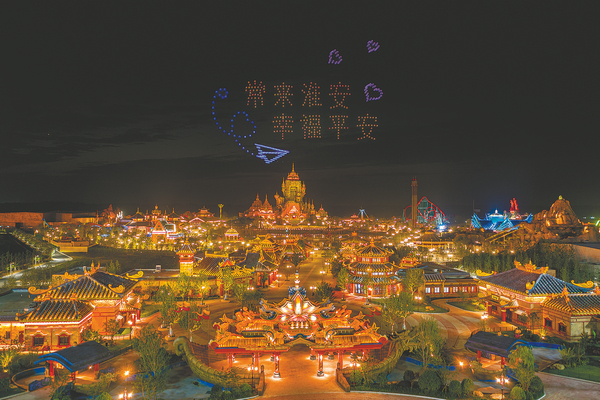

This summer, the garden's managers went beyond their remit of being responsible for the plants, flowers and animals at the venue, and came up with the idea of giving it the feel of a theme park in the evenings.
During her visit, Sui watched a number of parades and performances based on themes from Journey to the West, one of China's most popular literary works.
"When we walked to see one parade, the entire pathway was filled with dry ice, creating a kind of dream world. It was overwhelming," Sui said.
"I really love the Monkey King, who was portrayed exceptionally well. The performances included the Monkey King using his magic staff, which bears the poetic name At-will Golden Banded Staff."
Journey to the West, written during the Ming Dynasty (1368-1644) by Wu Cheng'en, depicts the pilgrimage of a monk and his three disciples, including the Monkey King.
In 1986, the TV adaptation of Journey to the West, which has had an enduring impact on millions, was a hugely popular series with audiences of all ages.
As a result, it is no surprise that the Changchun Zoological and Botanical Garden's initiative has rekindled childhood memories for many Chinese and is attracting visitors from across the country.
Short videos and posts featuring the park quickly began appearing on the internet, prompting many netizens to ask why, when it comes to theme parks, Chinese traditional culture and iconography seems to be largely absent. One poster on a social media site stated: "We should build a Journey to the West theme park in each of the top 10 cities in China. It would obviously be more fun than Disney."
International theme parks — think Disneyland and Universal Studios — occupy an inordinately large space in China, but no park of national significance has been based on traditional Chinese iconography.
Sui said the Journey to the West show in Changchun bore strong Western overtones, such as Disneyesque parades and character performances.
"After my visit, I now really want to explore Shanghai Disneyland," she said.